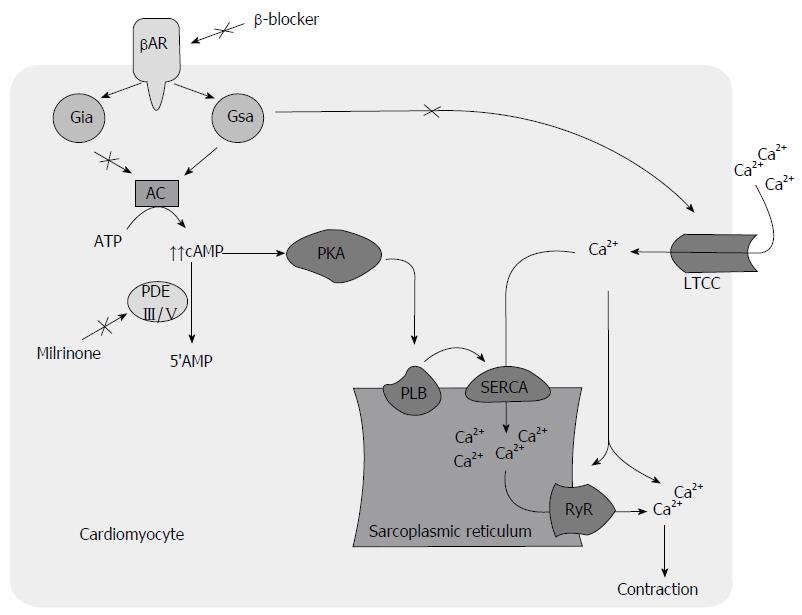Copyright
©The Author(s) 2016.
World J Cardiol. Jul 26, 2016; 8(7): 401-412
Published online Jul 26, 2016. doi: 10.4330/wjc.v8.i7.401
Published online Jul 26, 2016. doi: 10.4330/wjc.v8.i7.401
Figure 3 Concomitant use of beta blocker and milrinone causes inhibition of G inhibitory alpha protein which is an inhibitor of adenylyl cyclase and phosphodiesterase III enzyme, both results in increased cyclic adenosine monophosphate concentration.
Increased cAMP inhibits phospholamban (PLB) resulting in efficient movement of calcium (Ca2+) from cytosol into the SR through sarcoplasmic reticulum calcium ATPase (SERCA). This PLB mediated Ca2+ handling results in improved systolic and diastolic function. In addition, BB inhibits beta-adrenoreceptor (βAR) mediated increased Ca2+ influx through L-type calcium channel (LTCC) that is associated with increased arrhythmogenicity. ATP: Adenosine triphosphate; cAMP: Cyclic adenosine monophosphate; Gαi: G inhibitory alpha protein; Gαs: G stimulatory alpha protein; PDE: Phosphodiesterase; SNS: Sympathetic nervous system; BB: Beta blocker; AC: Adenylyl cyclase.
- Citation: Jaiswal A, Nguyen VQ, Le Jemtel TH, Ferdinand KC. Novel role of phosphodiesterase inhibitors in the management of end-stage heart failure. World J Cardiol 2016; 8(7): 401-412
- URL: https://www.wjgnet.com/1949-8462/full/v8/i7/401.htm
- DOI: https://dx.doi.org/10.4330/wjc.v8.i7.401









